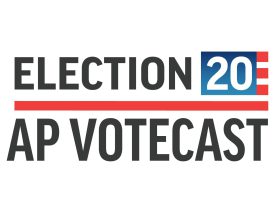
AP VoteCast is a modern, innovative survey of the American electorate conducted in all 50 states that was designed to tell the story of the election. VoteCast debuted for the 2018 midterm elections after years of testing and development.
Since the 1960s, media organizations have used exit polls to tell the story of elections, to better understand which populations are voting for what types of candidates and policies, and to serve as a hub in our decentralized election system for synthesizing information and insights for the public. The original methodology for exit polls involved in-person interviews as voters leave the polling place. This method has remained fundamentally unchanged even as elections have seen significant changes in the way people vote. For example, in 2016 over 40 percent of ballots were cast early, absentee, or by mail, and this figure is on the rise.
VoteCast was designed by NORC at the University of Chicago and The Associated Press to overcome these challenges and provide a new approach to understanding elections. Using a random, probability-based sample of registered voters to carefully calibrate a very large sample from opt-in, online panels, VoteCast delivers the best of both methods – the accuracy of probability-based surveys combined with the scale provided by an opt-in survey that interviews tens of thousands people quickly. Because VoteCast is not based on in-person interviews at the polling booth, it is able to capture the opinions of both people who vote and registered voters who decided not to cast a ballot. It also provides results in every state holding a statewide election, which means VoteCast delivers a broader portrait of the American electorate than any other election survey.
VoteCast was officially rolled out for the 2018 midterm election, and it was an impressive success. Not only did the survey complete a massive number of interviews in a short turnaround, its results were comprehensive and accurate when compared with key benchmarks. Specifically, VoteCast:
- Completed interviews with nearly 140,000 registered voters in just eight days leading up to the election and, for the first time, provided estimates of the electorate in all 47 states with statewide races in the midterm elections;
- Produced estimates of the composition of the national electorate within 1-2 percentage points of the 2018 Current Population Survey’s Voting and Registration Supplement estimates for all age groups, gender, racial/ethnic groups, and education levels;
- Correctly projected the winner in 92 percent of Senate and governor elections at 5 p.m. on Election Day, which is the critical time for making editorial decisions, a better track record than exit polls in recent years;
- The estimate of the national house vote at 5 p.m. on Election Day had a 9.0 percentage point advantage for Democratic candidates over Republican candidates, and the final vote count had an 8.6 percentage point advantage for Democratic candidates.
- Had an average error of only 1.2 percentage points in favor of the Democratic candidate for Senate and governor races at 5 p.m. on Election Day.
Because of their confidence in the data, both The Associated Press and Fox News used the data to call race outcomes and to explain the mood of the electorate in their election-night coverage.
AP and NORC are committed to transparency of VoteCast’s methods and results, as well as the continual improvement of the VoteCast methodology over time. This report provides the results of a thorough assessment of VoteCast’s performance in the 2018 midterm elections.

